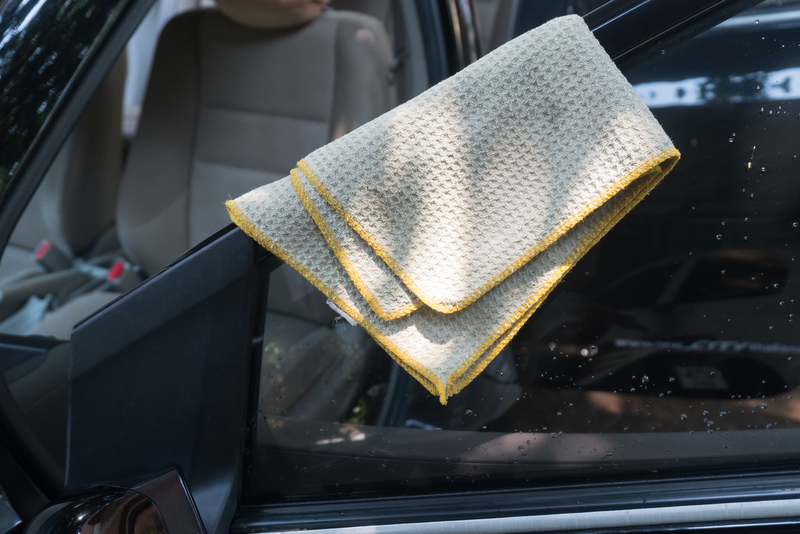Achieve a Sparkling Stovetop by Removing Burnt Residue
Posted on 10/09/2025
Achieve a Sparkling Stovetop by Removing Burnt Residue
The stovetop is an essential and heavily used area in any kitchen. Cooking mishaps, spills, and splatters inevitably lead to stubborn, burnt-on residue that dulls your stove's shine. A sparkling stovetop is not only visually appealing but also promotes kitchen hygiene and extends the life of your appliance. In this comprehensive guide, we'll explore professional, eco-friendly, and effective procedures to remove burnt residue from stovetops, along with expert tips for ongoing maintenance and deep cleaning.
Table of Contents
- Why Cleaning Burnt Residue Matters
- Understanding Different Types of Stovetops
- Common Causes of Burnt Residue on Stovetops
- Essential Supplies for Cleaning Burnt Stovetops
- Step-by-Step Guide: How to Remove Burnt Residue
- Eco-Friendly Methods for Sparkling Results
- Tips to Prevent Future Burnt-On Messes
- When to Deep Clean Your Stovetop
- Frequently Asked Questions
- Conclusion
Why Cleaning Burnt Residue Matters
A clean stovetop isn't just about looks. Accumulated grease, charred spills, and food bits create a breeding ground for bacteria, alter cooking flavors, and can even cause smoke or unpleasant odors every time you cook. Most importantly, burnt-on food can damage the enamel or finish, leading to expensive repairs or replacements.
Main Benefits of a Sparkling Stovetop
- Enhanced Kitchen Hygiene: Prevents mold, germs, and contaminants from spreading.
- Improved Cooking Efficiency: Burnt residue can affect burner performance and heat distribution.
- Prolonged Appliance Lifespan: Allows easier maintenance and reduces corrosion risk.
- Better Aesthetics: Creates a welcoming and polished kitchen environment.
Understanding Different Types of Stovetops
To remove burnt residue from a stovetop effectively, it's crucial to know your stove type, as each material reacts differently to cleaning products and techniques.
Popular Stovetop Types
- Gas stovetops: Have grates and removable burners; spills can quickly get baked-on.
- Electric coil stoves: Feature exposed coils and drip pans, which can catch and burn food.
- Glass-ceramic cooktops: Smooth surfaces, visually appealing, but present unique cleaning challenges due to their fragility.
- Induction cooktops: Have glass tops and use electromagnetic energy; they require a gentle touch for cleaning.
Note: Always check your manufacturer's manual for any specific cleaning recommendations!
Common Causes of Burnt Residue on Your Stove
Before learning how to achieve a sparkling stovetop by removing burnt residue, let's address what causes these stubborn stains:
- Boil-overs: Starchy foods (like pasta or rice) create sticky, burnt patches.
- Greasy foods: Spattering oil bakes onto hot surfaces, creating tough spots.
- Sugar spills: Caramelizes instantly and sticks stubbornly to the surface.
- Neglect: The longer residue sits, the harder it becomes to remove.
You're not alone--these stains are nearly impossible to avoid entirely. Fortunately, with the right techniques, your stovetop can look like new again!
Essential Supplies for Cleaning Burnt Stovetops
Gathering the correct materials ensures efficient removal of burnt-on food and prevents accidental damage. Here's what you'll need:
- Non-scratch sponges or microfiber cloths
- Plastic or silicone scraper
- Baking soda and white vinegar
- Dish soap (preferably degreasing)
- Spray bottle with water or diluted vinegar
- Old toothbrush
- Gloves (to protect your hands from hot water or cleaning agents)
- Optional: Store-bought stovetop cleaner for tougher jobs
Step-by-Step Guide: How to Remove Burnt Residue and Achieve a Sparkling Stovetop
Step 1: Safety First
- Ensure the stovetop is completely cool before starting.
- Unplug or turn off the appliance (especially with electric or induction stoves).
Step 2: Remove Loose Debris
- Take off burner grates, control knobs, and drip pans if removable.
- Wipe away crumbs, loose bits, and dust using a dry cloth.
Step 3: Soften and Loosen the Burnt Residue
- Mix equal parts vinegar and water in a spray bottle.
- Spray generously onto the burnt-on spots and let sit for at least 10-15 minutes.
- For tougher stains, lay a damp towel over the area and microwave it for 30 seconds, then place on the stain (for glass stoves).
Step 4: Use Baking Soda for a Gentle Scrub
- Sprinkle baking soda over softened stains.
- Drizzle a small amount of vinegar (fizzing action helps break down residue).
- Allow the mixture to bubble and work for 10-20 minutes.
Step 5: Scrape with Care
- With a plastic or silicone scraper, gently lift off stubborn, softened debris.
- Avoid metal tools which can scratch glass or enamel!
- On metal grates or coils, use a steel wool pad sparingly, focusing only on burnt patches.
Step 6: Wipe and Rinse
- Use a damp microfiber cloth or sponge to wipe away loosened residue.
- Repeat the process for persistent stains, applying more baking soda paste as needed.
Step 7: Polishing for a Sparkling Finish
- Once the residue is gone, wash the surface thoroughly with warm water and a drop of dish soap.
- Dry and buff the stovetop with a clean microfiber towel for a streak-free sparkle.
*Pro Tip*
For an extra glossy finish on glass or ceramic stovetops, finish with a dash of white vinegar and polish with a dry, lint-free cloth.
Eco-Friendly and Natural Cleaning Methods
Want chemical-free ways to achieve a sparkling stovetop? Here are the best sustainable options:
- Lemon Juice: The citric acid helps cut grease and leaves a fresh scent.
- Baking Soda Paste: Mix three parts baking soda with one part water for a powerful, scratch-free scrub.
- Steam Cleaning: Place a damp towel on the stovetop, then lay a hot (but not boiling) pot on top for a few minutes to loosen grime.
- Cornstarch: Gently polishes glass stovetops and removes water spots.
These gentle approaches are safe for most surfaces, family, and pets.
Tips to Prevent Future Burnt-On Messes
Maintaining a clean stove top is easier than tackling deep, stuck-on residue. Try these expert tips:
- Wipe up spills promptly: Fresh messes come off with a damp cloth far more easily than baked-on ones.
- Use burner liners: These catch drips and can be washed or replaced regularly.
- Check your cookware: Ensure pots are in the center of the burner to avoid spills on the sides.
- Regular weekly cleaning: Makes burnt residue formation less likely.
An ounce of prevention is worth a pound of cure!
When and How Often Should You Deep Clean Your Stovetop?
While daily or weekly wipe-downs keep your stove presentable, a deep clean is necessary:
- Monthly: For homes that cook frequently or prepare elaborate meals.
- After major spills: Especially if sugary or fatty foods have burnt onto the surface.
- Seasonally: If you rarely cook, a quarterly deep clean is often enough.
Deep cleaning involves removing all removable parts, soaking them, and addressing every nook and cranny for a true sparkling stove transformation.
Frequently Asked Questions: Removing Burnt Stovetop Residue
Is it safe to use a razor blade on my glass stovetop?
No. Although some manufacturers state you can use a specialized scraper, regular razor blades can easily scratch or crack the surface. Always use a tool designed specifically for glass or ceramic stoves.
Can I use bleach to clean my stovetop?
It's not recommended. Bleach is too harsh for most stove surfaces and may discolor or corrode certain materials. Stick with baking soda, vinegar, and gentle dish soap for best results.
How do I clean cast iron stove grates?
Soak the grates in a mixture of hot water and dish soap. After soaking, scrub with a nylon brush or sponge, and use baking soda paste for any sticky, burnt patches. Never put cast iron grates in the dishwasher unless specified by the manufacturer.
What should I do if the residue just won't budge?
Apply a thick paste of baking soda and water, cover the area, and let it sit overnight. In the morning, gently scrub with a soft sponge. For extremely tough jobs, a specialized glass/ceramic cooktop cleaner may be necessary.
Conclusion: Enjoying Your Sparkling Stovetop
With the right tools, a bit of patience, and the step-by-step cleaning methods in this guide, achieving a sparkling stovetop by removing burnt residue is easier than you might think. Whether your stove is gas, electric, or glass, these tips and cleaning solutions will save you time, effort, and frustration--while ensuring that your kitchen remains both beautiful and hygienic.
Remember:
- Clean up spills promptly.
- Use gentle, effective cleaning products and tools.
- Deep clean periodically for the best results.
With regular cleaning and preventive care, your stovetop will be the sparkling centerpiece of your kitchen for years to come. Happy cooking!





